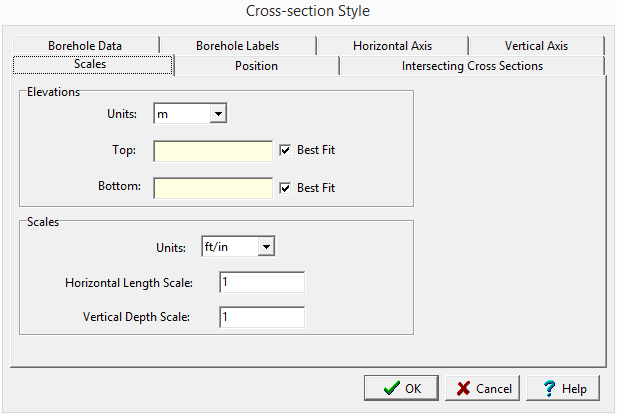|
<< Click to Display Table of Contents >> Scales Tab |
  
|
|
<< Click to Display Table of Contents >> Scales Tab |
  
|

The Scales tab is used to specify the following information:
Elevation Units: These are the units to use when specifying the top and bottom elevations. The units can be either meters or feet.
Top Elevation: This is the top elevation of the cross-section. The elevation can be specified or the best fitting elevation used. The best fit elevation is determined from the Borings/Wells used in the actual cross-section and may vary for each cross-section.
Bottom Elevation: This is the bottom elevation of the cross-section. The elevation can be specified or the best fitting elevation used. The best fit elevation is determined from the Borings/Wells used in the actual cross-section and may vary for each cross-section.
Scale Units: This is the units to use for the horizontal and vertical scales of the cross-section. The units can be either m/cm, m/in, ft/cm, or ft/in.
Horizontal Length Scale: This is the horizontal scale of the cross-section. It relates real world coordinates with page coordinates. For example if the scale units are m/cm and the scale is 5, then 5m in real coordinates would equal 1 cm on the page.
Vertical Depth Scale: This is the vertical scale of the cross-section. The vertical and horizontal scales do not need to be the same. Typically, cross-sections have some degree of vertical exaggeration.